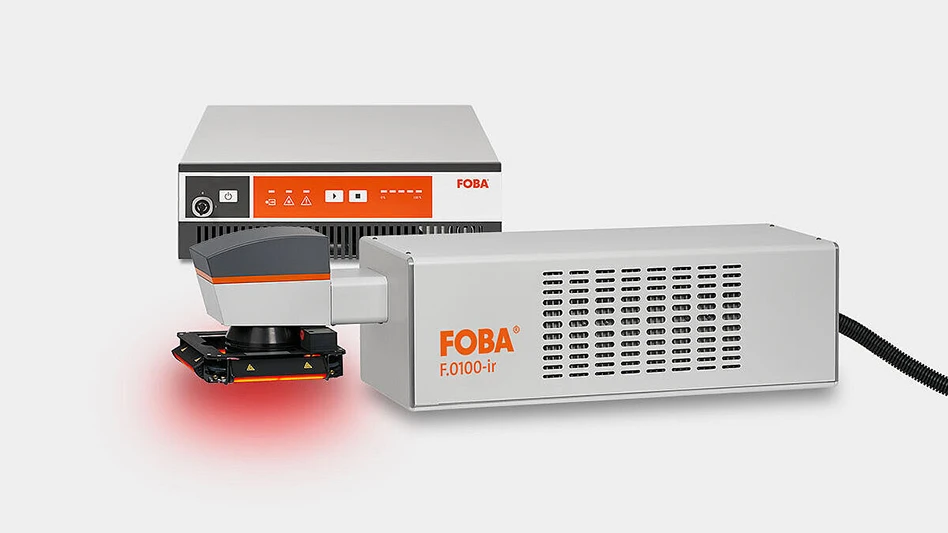
options for micron- level resolution and accurate field-of-view (FOV) measurements.
The modern medical device industry is subject to some of the most stringent and demanding manufacturing standards in the world, as well as tight delivery timelines. Virtually every aspect of each part is tracked and inspected for quality, requiring 100% inspection assurance and part traceability. As a result, an efficient quality control (QC) department is critical, requiring equipment that’s dependable, accurate, fast, and easy to operate.

routines to be created for workpieces
based upon the master template,
complete with tolerances.
Traditionally, when selecting a metrology system solution, compromise has often been the norm – either choose optical systems for their reliability, ruggedness, and familiarity, or choose vision systems for speed, accuracy, and convenience. Users rely on optical comparators because of their ease of use and established track record. Comparators provide a combination of excellent image quality and a full range of features. These include superb optics, readout devices, software interfaces, and geometric measuring capabilities. While the basic components of a comparator have remained the same – such as lights, mirrors, and lenses – construction and functionality have increased. Modern comparators are built to withstand practically any harsh conditions found in a manufacturing facility. The body of the comparator is usually a sealed, all- metal construction to keep out the elements. The stage is wear-resistant to hold up against constant, repeated use, and a range of compatible accessories and readout options make stock comparators flexible and highly customizable. For these reasons, combined with their reliable track record and familiarity, optical comparators continue to be the system of choice in many manufacturing facilities.

identifies the edge of a workpiece, virtually
eliminating operator-to- operator subjectivity.
Despite their proven performance, there are some drawbacks, especially when considering the demands of the medical device industry. Training on a comparator can be time consuming, and visual inspection of parts on a traditional comparator screen introduces operator-to-operator subjectivity. Vision systems have more recently become the new gold standard in terms of maintaining strict tolerances in fast-paced manufacturing environments, but these systems also have limitations. Many vision systems come in a vertical orientation with an interface that operators are not accustomed to using. This can result in a newly acquired vision system being left in the corner in favor of the more familiar comparator.
However, with today’s metrology technology, manufacturers don’t have to make a choice between an optical comparator or a vision system. Now, optics with linear encoders and data processing can be combined to produce an advanced level of precision measurement. Using the best features from optical comparators and vision metrology systems, a unique product category has been created – digital comparators.
Benefits of a digital comparator
At first glance, a digital comparator looks almost identical to a traditional optical comparator because the body and stage of the system are the same platform, with the same basic stage motion and controls as a traditional comparator. However, where the top of a traditional comparator consists of mirrors reflecting an illuminated image onto a glass screen, the digital comparator has a PC-driven monitor running vision system software. This transition to video from lights and mirrors opens a host of advancements.

DXF/CAD files, a.k.a. digital overlays,
to be uploaded and stored.
One of the top advancements in transitioning from a traditional comparator to a digital comparator is the option to add or upgrade to CNC control. For those who are looking to save costs or prefer traditional hand controls, manual digital comparators are available. For those looking to take full advantage of the powerful vision system software, full CNC models are the best choice.
With CNC control comes the ability to use pattern recognition where inspection routines are created for workpieces based upon the master template, complete with tolerances. Precise stage motion and lighting control can be built in as programmable steps to ensure maximum repeatability. Once the program is created, an operator can place a sample on the stage and initiate the routine. Once initiated, the system automatically runs the inspection, taking all relevant data points and providing accurate results in seconds. In practical application, this means virtually anyone on the shop floor can be taught to run accurate inspections with minimal training, drastically reducing the likelihood of QC bottlenecks.

amounts of data to be collected quickly
and easily from each part inspection,
in real-time and documented with date,
time, lot number, job number and so on –
removing operator error from the equation.
Tremendous amounts of data can be collected quickly and easily from each part inspection in real-time, documented with date, time, lot number, job number, and so on, removing operator error from the equation. This provides comprehensive data for statistical process control (SPC) and traceability. With digital comparators, 100% inspection is possible, and inspection speed and output can be dramatically increased due to automating the measurement process.
Because digital comparators are PC-driven, the need to maintain and store traditional, subjective mylar overlays is also eliminated. Instead, end users can upload and store DXF/CAD files and digital overlays, where the template master is digitally placed on the PC screen over the video image of the workpiece. This feature allows for instant comparison and Go/No-Go assessment in real time, complete with a live whisker error display. This type of fast and accurate assessment is crucial for completing in-process inspection, preventing costly re-work and scrap. Along with the traditional mouse control, the touchscreen monitor interface also allows for one-touch markup, using a finger to identify key features of a workpiece for measurement.
The lens interface of a digital comparator has also been updated. A conventional comparator uses optical lenses at certain magnification levels – usually ranging from 10x up to 100x. A digital comparator replaces those lenses with the user’s choice of zoom or fixed magnification telecentric lenses, depending on needs.
For high magnification levels, a zoom lens is the preferred option, with magnification levels of up to 363x on the monitor; ideal for small parts and hard-to-measure features. If a larger field of view is required for inspection of a workpiece’s broader sections, such as non-prismatic complex curves on a hip or knee implant, then the telecentric lenses are the right choice. Options range from 8.6x to 247x. Many of these lenses are also interchangeable, allowing users to switch between options in a matter of seconds.
With the advancement to digital video cameras also comes the implementation of video edge detection (VED), which automatically identifies the edge of a workpiece, virtually eliminating operator-to-operator subjectivity.

Digital Comparator combines
the best features of a horizontal
optical comparator and a
vision metrology system.
Lighting control has also advanced considerably. Surface illumination, typically not a strong feature of a traditional comparator, is exceptional on a digital comparator and can easily be controlled. Light can be increased for the inspection of surface micro-etching or recessed areas such as through-holes, or it can be decreased to prevent the image from being washed out due to the highly reflective nature of many medical devices. In either case, because the desired amount of light can be pre-programmed into a routine, every operator can be confident they’re looking at the same image test after test.
Because the actual work stage on a digital comparator is the same as a traditional comparator, many of the fixturing accessories operators are familiar with are still relevant. In addition, rotary indexers – motorized systems that affix to the work stage to provide precision rotation of workpieces for inspection – are also available on digital comparators. Indexers are ideal for holding small, cylindrical parts, such as a bone screw, and can be used in conjunction with the optional thread software module for analysis of features such as thread pitch and diameter. They can also be used for inspection of complex curves on many types of medical devices or implants.
The modern digital comparator preserves all the best qualities of optical comparators in terms of durability and familiarity, while simultaneously adding cutting-edge speed and accuracy. What results is a system that can immediately have a dramatic and positive impact in medical QC environments.
About the author: CW Moran is a marketing specialist in the metrology division of The L.S. Starrett Co.

Explore the September 2023 Issue
Check out more from this issue and find your next story to read.
Latest from Today's Medical Developments
- Why manufacturing, intralogistics companies need to embrace the cloud
- February 2025 US cutting tool orders total $198.6 million
- The Smoothest Surfaces For Your Toughest Materials
- Extraordinary Starts Where Limits End | Okuma
- DISCOVER MORE WITH Mazak Northeast event
- Walter’s WT26 partial- and full-profile thread turning inserts
- Metalworking machinery orders increase for February 2025
- JW Winco’s practical sensor holders





